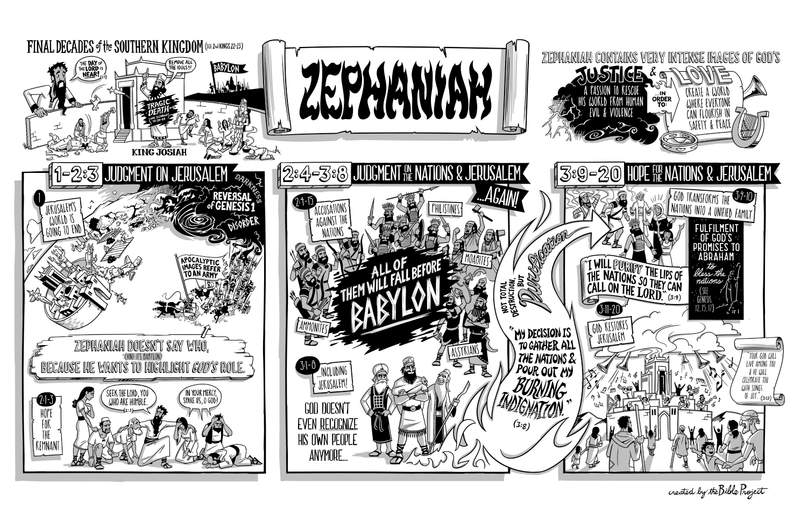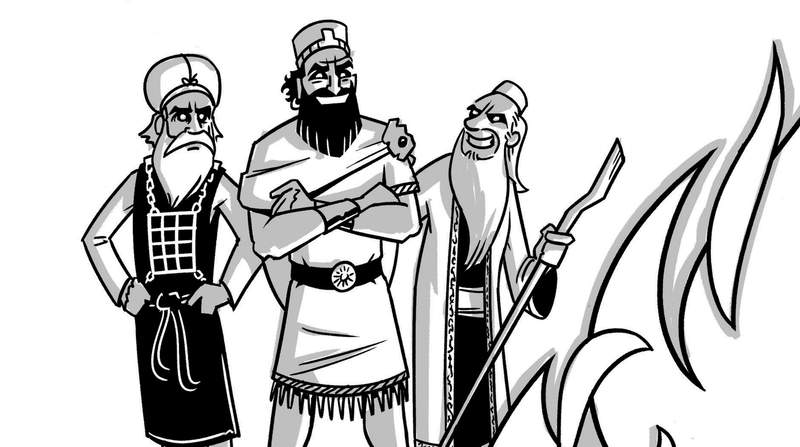The Book of Zephaniah
About

One important aspect of the ancient TaNaK order of the Hebrew Bible is that the 12 prophetic works of Hosea through Malachi, sometimes referred to as the Minor Prophets, were designed as a single book called The Twelve. Zephaniah is the ninth book of The Twelve.
Zephaniah lived during the final decades of the southern kingdom of Judah, when King Josiah had attempted to bring about real change in the land by removing idols and restoring the temple to the worship of Israel’s God alone (2 Kgs. 22-23). By that point, however, Israel was already too far gone, as the worship of other gods was too entrenched in the people’s lives. Josiah’s pride led him to a tragic death on the battlefield (2 Chronicles 35:20-25), and so Jerusalem was set on a collision course with Babylon. Zephaniah had seen all this coming and had been warning the leaders of Jerusalem for years. This book is a collection of his poetry and a summary of his message.
The book of Zephaniah has a three-part design. The first focuses on the day of the Lord’s judgment coming for Judah and Jerusalem (Zeph. 1:1-2:3), while the second looks at the day of the Lord’s judgment on the other nations and Jerusalem once more (Zeph. 2:4-3:8). The third section explores the hope that remains for the nations and Jerusalem on the other side of judgment (Zeph. 3:9-20).
Zephaniah 1:1-2:3: God’s Judgment on Judah and Jerusalem
The first section opens with a shocking reversal of Genesis 1. God’s good, ordered world is going to descend back into disorder and darkness, becoming uninhabitable once again. As you keep reading, you realize that Zephaniah is developing this powerful poetic image to describe how Jerusalem’s world is going to end. All of the city’s institutions for worshiping the gods of the Canaanites will be destroyed. All the leaders who perpetrated injustice, all the economic centers where crooked lending and borrowing took place, all of it will be gone. Zephaniah is using these apocalyptic images to show the heavenly significance of what’s going to happen. God will allow a great army to come and take out Jerusalem.
It’s interesting that Zephaniah never mentions whose army God will use to bring his judgment. We know from the books of Micah and Habakkuk that it’s Babylon, but Zephaniah never mentions that because he wants to highlight God’s role in orchestrating the rise and fall of nations. This is actually what gives Zephaniah hope. While Jerusalem as a whole cannot avoid its fate, Zephaniah calls on any in the city who would “seek the Lord” (Zeph. 2:1-3). He says that these are the faithful remnant, who can be spared if they repent.
Zephaniah 2:4-3:8: God’s Judgment on the Nations and Jerusalem
In the second section, Zephaniah widens his focus to include the nations around Judah: the Philistines, Moabites, Ammonites, and even the Assyrians. He accuses them all of corruption, violence, and arrogance and predicts that they will fall before Babylon (Zeph. 2:4-15).
What’s shocking is that the final people group targeted in this section about the pagan nations are the Israelites in Jerusalem. Their leaders, prophets, and priests are so corrupt, violent, and estranged from their God that he doesn’t even recognize them as his people anymore. The section ends with God’s final decision. He’s going to gather up all nations, including Jerusalem, and “pour out his burning indignation” (Zeph. 3:8). God’s justice becomes a consuming fire, devouring evil from the land.

Zephaniah 3:9-20: Hope for the Nations and Jerusalem
This is some really intense imagery, so the following line that brings us into the final part of the book comes as a surprise. This burning fire of divine justice is not aimed at total destruction; rather, it will purify the nations and Jerusalem itself (Zeph. 3:9-20). God says that he will heal and transform the rebellious nations into a unified family and that, after being purified, they will turn from their evil and call upon the name of the Lord. These images point to the fulfillment of God’s promise to Abraham from Genesis 12, that he would find a way to bless the nations and Jerusalem as well.
The conclusion of the book focuses on the restoration of a new Jerusalem at the center of the other nations. God’s presence will be there along with the faithful remnant that’s been humbled and transformed by God’s mercy. This remnant is called to sing and rejoice, and, in a striking image, we’re told that God is a poet who sings as well. “Your God will live among you … he will celebrate you with songs of joy” (Zeph. 3:17). The closing poem ends with powerful images of God gathering up into his family the outcast, the poor, and the broken, exalting them into a place of honor.
The little book of Zephaniah contains some of the most intense images of God’s justice and love that you find anywhere in the Prophets. God’s justice comes from his passion to protect and rescue his world from the horror of human evil and violence. He simply won’t tolerate the horrible things that humans do to each other and the world in which they live. But God’s judgment has a greater purpose—to restore and create a world where people can flourish in safety and peace.
Zephaniah forces us to hold together two aspects of God’s character—his justice and his love—to discover that together they contain the future hope for our world.


